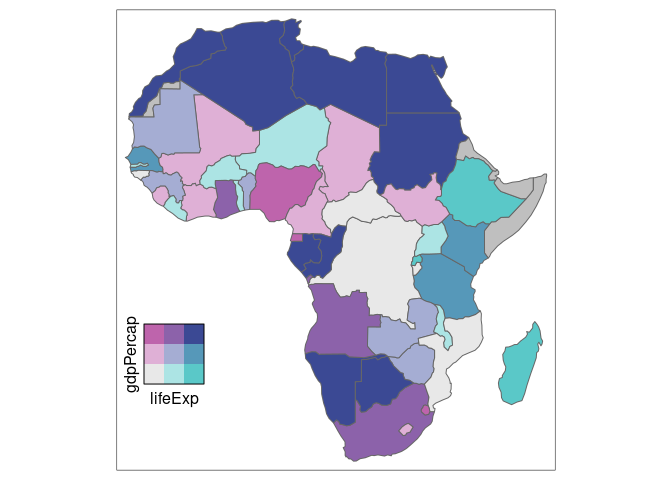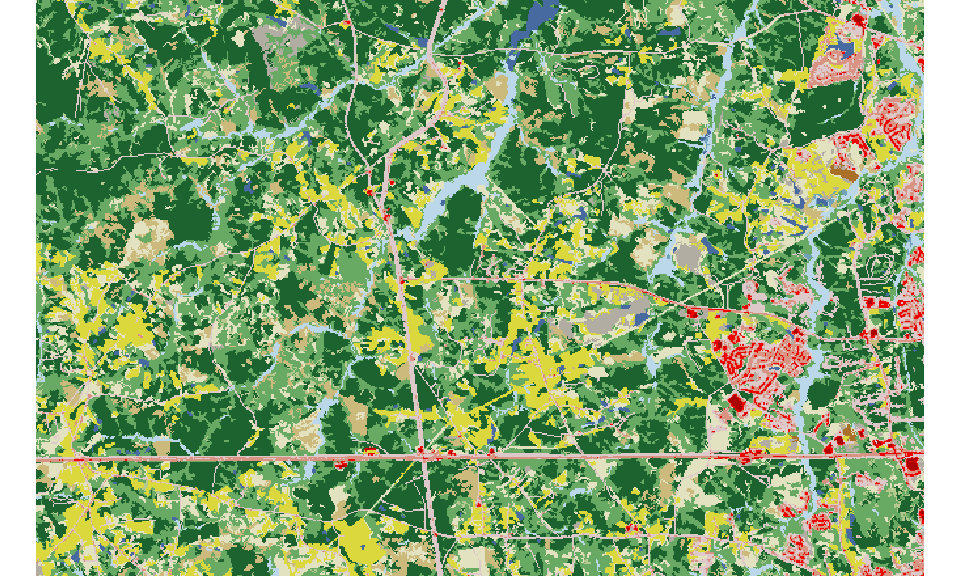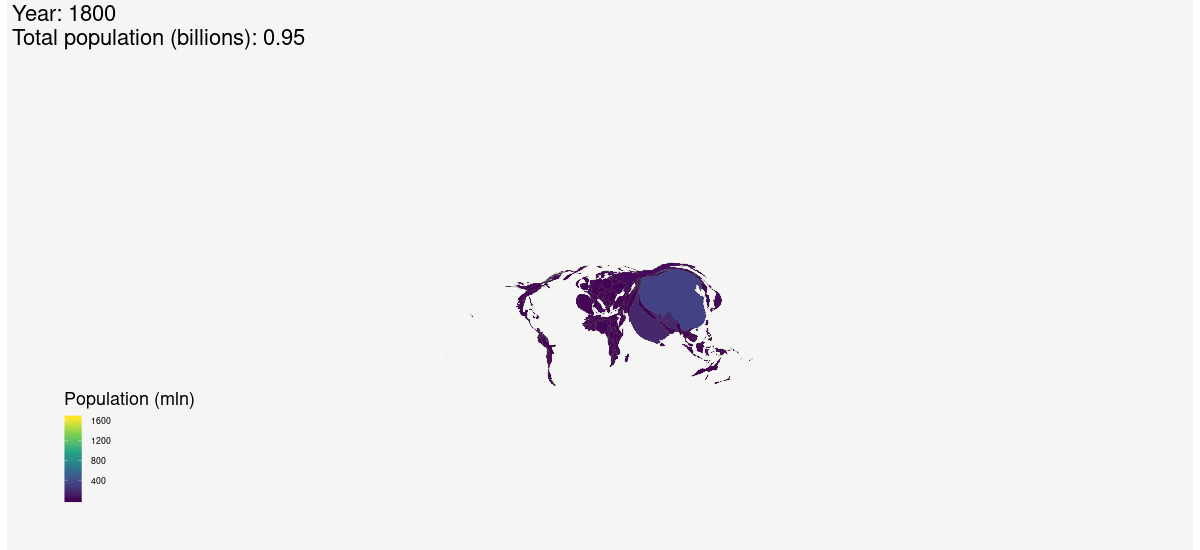TLTR: Finding similar spatial patterns requires data for a query region and a search space. Spatial signatures are derived for the query region and many sub-areas of the search space, and distances between them are calculated.
Thinking in spatial patterns
TLTR: Spatial signatures are multi-value representations of the patterns that compress information about spatial composition and configuration. Spatial signatures can be directly compared using various distance measures. Describing categorical rasters A categorical raster shown below represents land cover data for some area. This area is mainly covered by forest, with some small patches of agriculture, grasslands, and water.
I gave the overview of what is the pattern-based spatial analysis and how it can be applied for the RGS-IBG GIScience Webinar Series. You can find the workshop abstract, slides, and recording below. Abstract Discovering and describing spatial patterns is an important element of many geographical studies with spatial patterns being related to ecological and sociological processes.
TLTR: motif is an R package aimed for pattern-based spatial analysis. It allows for spatial analysis such as search, change detection, and clustering to be performed on spatial patterns. This blog post introduces basic ideas behind the pattern-based spatial analysis, and shows the types of problems to which it can be applied.

Bivariate color palettes are products of combining two separate color palettes. They are usually represented by a square with rows (one color palette) and columns (second color palette). You can more about how they are made in the blog post “Bivariate Choropleth Maps: A How-to Guide” by Joshua Stevens. The main role of bivariate color palettes is to present the values of two variables simultaneously.

The raceland package implements a computational framework for a pattern-based, zoneless analysis and visualization of (ethno)racial topography. The main concept in this package is a racial landscape (RL). It consists of many large and small patches (racial enclaves) formed by adjacent raster grid cells having the same race categories.
Maximilian H.K. Hesselbarth and I gave the Introduction to landscape ecology with R workshop during IALE-North America 2020 Annual Meeting. You can find the workshop abstract, slides, and recordings below. Abstract R is a free, open-source programming language created as an environment for statistical computing and visualization. The advantages of using R include its flexibility, ease of collaboration, and focus on reproducibility.

In the last few weeks, I was asked a similar question several times - how to calculate landscape metrics for local landscapes? In other words, how to divide the categorical input map into a number of smaller areas, and next calculate selected landscape metrics for each of the areas. Those areas have many names, such as tiles, squares, or motifels.

R version 4.0 is just around the corner. One of the changes in the new version is the improved default color palette using the palette() function.

Quantitative assessment of spatial patterns has been a keen interest of generations of spatial scientists and practitioners using spatial data. This post describes Information Theory-based metrics allowing for numerical description of spatial patterns. Each example is accompanied by an R code allowing for reproducing these results and encouraging to try these metrics on different data.

A few months ago I have made an attempt to visualize the world population changes from 1800 to 2100: {{% tweet "1049685831475187712" %}} This way of visualization is good to show the ever-changing distribution of the population on a global scale. It allows seeing that, China and India dominated the world population, but also a large share of the world population had lived in Europe in 1800.